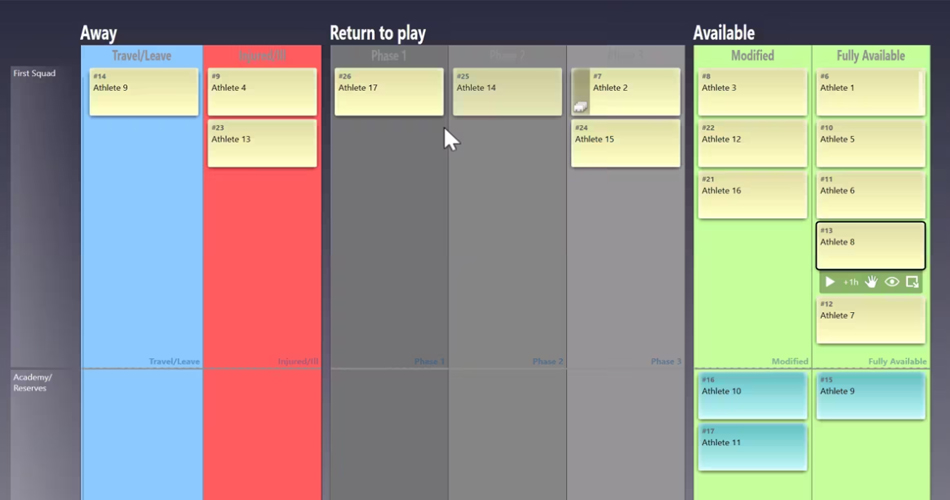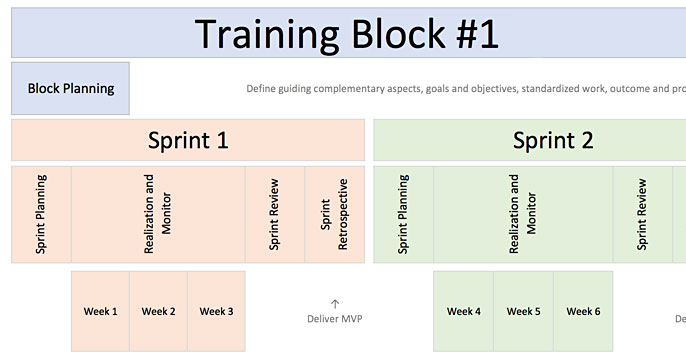Comments on Agile Planning and Scrumban Boards Posts
Danilo Tambone, who is Agile and Project Management expert and the author of Udemy course (which I recommend checking) was kind enough to give me feedback on my recent articles/videos on Agile implementation in training. I always welcome feedback, positive or negative, and I am especially receptive to this topic since it is something that I am working on and trying to wrap my head around. Besides, I am most likely to present on the topic on the ASCA Conference this November in Melbourne.
Anyway, here are Danilo’s comments.
A few comments from my side.
I like the way you use the Kanban board in the first part of your video. It is an effective way to have visual evidence of how the athletes’ level varies over time, and who of them needs support or attention.
Be aware, though, that this use of Kanban is not what you find in the agile approaches. The Kanban board gives you the evidence of a flow of deliverables from their ideation, to their subsequent transformational statuses, until their final “done” status, when they leave the board.
In your case instead, what you are doing is “Visual Management“.
Again, for your specific viewpoint, the way you use the “Signboard” is just perfect, since you’re able, with a single glance, to visually check the current situation and take appropriate actions whenever needed.
Have you already tried the Scrum approach on real cases? Were you already able to have your trainers or athletes focus on short wins, as a progression path to full preparation goals (to be managed at “Release” level)?
My suggestion is to gather real feedback from them asap, in order to fine tune your approach and expand its usage with your colleagues!
As for the article, I have a question for you on the chart at page 3. In my opinion, steps 1 to 3 are simply gathering of requirements that should happen anyway before you start making any planning, either traditional or agile, in order to have thorough clarity on the scope of the training project. Do you think instead you would benefit from making an agile planning on them as well?
Then, I agree with you that focusing on steps 4-5 too much in details from the very first moment would be an useless exercise. You work with real people, and a training program should be flexible enough to adapt to changing situations (an athlete who doesn’t perform as expected and needs to develop certain physical capabilities before proceeding with the planned training, or who gets injured, or whatever).
What’s important is reducing the “feedback cycle” as much as possible. As you state in your article, waiting too long before measuring athletes’ performances is too bad, because you don’t monitor the real adaptation of athletes’ bodies over time and you don’t get enough insights in order to adapt the training.
Today we are full of tech tools that allow us to monitor KPIs (Key Performance Indicators) in effective and easy ways, so we should make good use of them!
Another aspect that I would like to put under your attention is the active involvement of agile team members.
In fact, in traditional project management (and traditional training as well) the resources/athletes are simply expected to execute tasks that somebody else assigns to them – in your case, following specific sets and reps as their trainers prescribe to them.
In agile project management, instead, team members keep full accountability of final results, have full visibility about how the project is progressing, and are allowed (even encouraged) to take on new paths in order to fulfill the goals.
In your application to training, this could mean that an athlete realizes he needs to develop a specific part of his body before progressing with the rest, or to focus more on resistance rather than aerobic capabilities, or to get more confident with specific skills, and he can be allowed to actively experiment a little bit (still under trainer supervision) instead of following a prescribed path.
Would this be acceptable in your environment?
Again, the key word here is fast feedback – realizing quickly that a certain set of actions brings better results than an originally planned path, may shorten the time needed to get the desired performances.
Besides, this would get your athletes even more committed to their training.
Again, congratulations on applying this approach to your training programs!
I suggest you to go through the ebook (or book, if you prefer) “Becoming Agile
…in an imperfect world” (https://www.manning.com/books/becoming-agile).
It’s quite an easy read but extremely powerful. It lets you follow the real-life situation of an agile implementation, detached enough from the software dev world to be meaningful also for the use you have to do!
It is amazing what we can learn from, at first glance, unrelated fields such as (Agile) Project Management. I want to thank Danilo for taking his time to check some of my writings and provide a feedback.











Responses